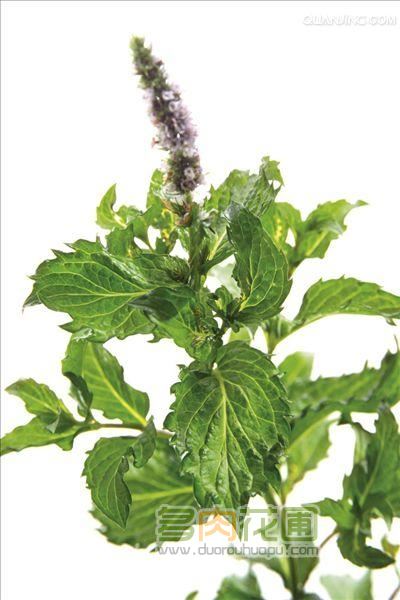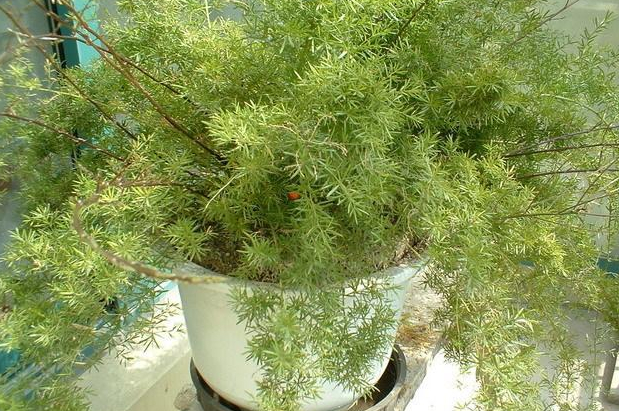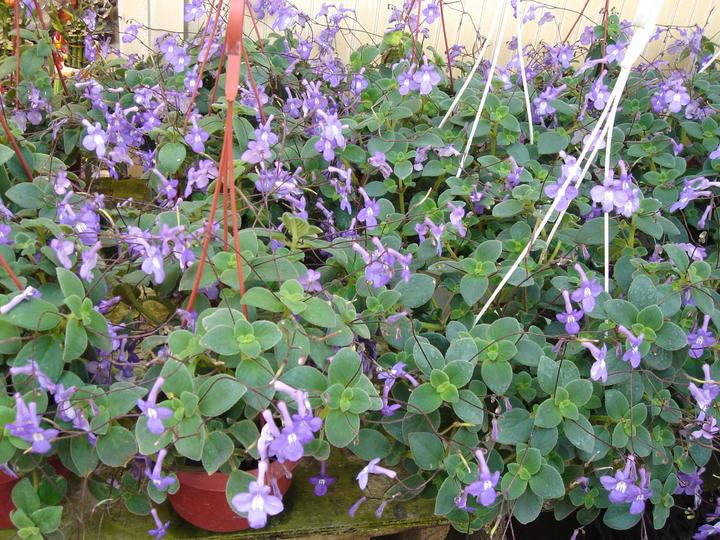Culture methods and matters needing attention of Peppermint
Peppermint is a perennial root herb with fragrant and cool taste. With creeping rhizomes with nodes, each node with two opposite buds and bud scales. The stem is quadrangular, erect, the upper part is velutinous, and the lower part has only a few hairs along the ribs. Leaves opposite, oblong-lanceolate to elliptic, 8-10 cm long and 3-5 cm wide, apex acute, leaf surface spreading, bright green to dark green, reticulate veins sunken, leaf margin serrated deep and sharp, petiole 1-2 cm long, pilose. Verticillate inflorescences axillary, calyx tube campanulate. The mint was first discovered and named by Karl Linnay when he collected samples in the UK. Linnay thought the plant was a new species, but there was a consensus in academic circles to classify peppermint as a hybrid plant.
Cultivation: the sandy loam or deep loam with adequate sunshine and good ventilation and good drainage is better. Seeds should be spread evenly in peat soil and should be slightly covered with soil and kept moist. The seeds should germinate quickly at a temperature of 20-25 °C. after germination, the seedlings should be exposed to light as soon as possible so as not to grow. The soil should be fertile, moist, alkaline and well drained. If there is enough light, it can be planted indoors.
Lavender flowers are the most abundant in essential oil, and flowers or inflorescences are mainly used. In order to facilitate harvest, some small inflorescences at the initial stage of cultivation might as well be leveled with large scissors, and the new inflorescences are high, which is beneficial to the second harvest. Some varieties can reach a height of up to 90 centimeters, and this method is also used to make the plants low and make them more branched, blossom and increase the yield.

1. Morphological characteristics.
Perennial perennial herbs with fragrant and cool taste. With creeping rhizomes with nodes, each node with two opposite buds and bud scales. The stem is quadrangular, erect, the upper part is velutinous, and the lower part has only a few hairs along the ribs. Leaves opposite, oblong-lanceolate to elliptic, 8-10 cm long, 3-5 cm wide, apex acute, leaf surface more flat, leaf color bright green to dark green, reticular vein sunken, leaf edge serrated deep and sharp, petiole 1-2 cm long, pilose. Verticillate inflorescences axillary, calyx tube campanulate. The mint was first discovered and named by Karl Linnay when he collected samples in the UK. Linnay thought the plant was a new species, but there was a consensus in academia to classify peppermint as a hybrid plant.
2. Species distribution
Originated in Europe, it was introduced to the United States in the 19th century, and then spread to Australia, India, China, Japan, Korea and so on.
3. Growth habits
Sex like warm, humid environment, in the growing period generally can withstand 40 ℃ high temperature, the aboveground part of the growing plant gradually withered after heavy frost, the underground part can withstand about-20 ℃ low temperature, seedlings encounter-6 ℃ low temperature, but the leaf surface is dark red, and not seriously damaged Magnolia fragrance taste sweet, soft and cool, slightly grassy and bitter taste.
4. Main components
The whole plant contains volatile oil, which is mainly composed of menthol (Menthol), menthone (Menthone), glucoside and many kinds of free amino acids.
5. Classification
Green stem species
Purple stem species
6. Varieties
There are two varieties in production: green stem and eupatorium adenophorum. Cultivated in the United States, the Soviet Union, Bulgaria, Italy, Morocco, India and other countries, especially in the United States.
7. Ornamental application
The main economic mint, leaves can be used as a vegetable, cold, stir-fried, commonly used in Europe to make tea. It can also be used in sauces, beverages, cold dishes, knife beans, potatoes or fish cooking, as well as in making snacks. In industry, it can also be used as the essence of soap, and the extracted essential oil is an important essential oil in candy, pharmacy and toothpaste. Chewing gum is also used a lot in production. When used as medicine in the tropics, leaf juice and spring onions are used together to inhibit vomiting, and essential oils can be used as deodorant and wind repellent.
Peppermint essential oil skin efficacy: increase skin elasticity, anti-aging, sensitivity, dilute scars, stretch marks, can eliminate the blockage of toxic accumulation in the body, thus improving eczema, ringworm, scabies and itching. Cool, relieve itching, inflammation and burns, but also soften the skin. Can instantly suppress fever, and promote perspiration, excellent efficacy in treating colds; psychological effect: can appease anger, hysteria and fear. Can be used as sauces, vinegar, vegetables, desserts or candy, peppermint oil has a cool and refreshing effect. It can also be used for seasoning beverages, cigarettes, toothpaste and medicines. Its essential oil can treat vomiting, peppermint itself has irritation, can help digestion, reduce gastrointestinal flatulence.
Cultivation: the sandy loam or deep loam with adequate sunshine and good ventilation and good drainage is better. The seeds should be spread evenly in peat soil and should be slightly covered with soil and kept moist. The seeds should germinate quickly at a temperature of 20 °C to 25 °C. after germination, the seedlings should be exposed to light as soon as possible to avoid growing. The soil should be fertile, moist, alkaline and well drained. If there is enough light, it can be planted indoors.
How to keep peppermint? Introduction of culture methods and matters needing attention of peppermint
Peppermint is an annual herb of Labiatae. It is a widely cultivated hybrid mint native to Europe and can be used as a seasoning for food. This mint variety is a hybrid of green mint and water mint.
Peppermint lips like warm and humid environment, generally can withstand the high temperature of 40 ℃ during the growing period, the aboveground part of the growing plant gradually withered after heavy frost, the underground part can withstand the low temperature of about-20 ℃, and the seedling meets the low temperature of-6 ℃, but the leaf surface is dark red and is not seriously damaged. The smell of orchid is sweet, soft and cool, with a hint of grass and bitterness.
Cultivation: sandy loam or deep loam with adequate sunshine and good ventilation and good drainage is preferred. The seeds should be spread evenly in peat soil and should be slightly covered with soil and kept moist. The seeds should germinate quickly at a temperature of 20 °C to 25 °C. after germination, the seedlings should be exposed to light as soon as possible to avoid growing. The soil should be fertile, moist, alkaline and well drained. If there is enough light, it can be planted indoors.
Reproduction: propagation can be done by seeds, cuttings, seedlings and rhizomes. Rhizomes and seedlings are often used in production. Rhizome propagation: from late October to early November, dig up the rhizome from the seed land, select the white, stout, short internodes, cut into 10 cm segments, and then plant into a 10 cm deep trench. The row spacing is 25 cm ~ 30 cm, and the plant spacing is 15 cm. Cover with fine soil after planting. General mu with white tender new rhizome about 100 kilograms. Seedling propagation: select fields with sturdy plants, consistent growth and no diseases and insect pests as seed plots. After autumn harvest, immediately ploughing, weeding and topdressing. In the first ten days of April of the following year, when the seedling was 15 cm high, the seedlings were pulled out and transplanted. According to the row spacing of 20 cm and the plant spacing of 15 cm, 2 seedlings were planted in each hole. After planting, the soil was compacted, and then poured with thin dung water to determine the root.
Conclusion: the above is the introduction of the maintenance methods of peppermint. I hope it will be helpful to you.
- Prev

Cultivation methods and precautions of asparagus
Asparagus is named Asparagus. It is a perennial semi-tendril green herb of Liliaceae. With spindle-like tuberous roots. Leaves linear, clustered, white or reddish, berries bright red. Like warm and humid environment, like sunlight, resistance to semi-shade, afraid of direct light. Suitable for loose fertile, well-drained sandy loam
- Next

Culture methods and matters needing attention of dolphin flowers
Dolphin flowers, suitable for half-day overcast growth environment, shaded and well-ventilated places are preferred. Choose the soil medium with good drainage, it can blossom all the year round in the warm climate, but still take spring and autumn as the main flowering season. Although the half-day overcast environment is most suitable for their growth, moderate sunshine is needed.
Related
- Fuxing push coffee new agricultural production and marketing class: lack of small-scale processing plants
- Jujube rice field leisure farm deep ploughing Yilan for five years to create a space for organic food and play
- Nongyu Farm-A trial of organic papaya for brave women with advanced technology
- Four points for attention in the prevention and control of diseases and insect pests of edible fungi
- How to add nutrient solution to Edible Fungi
- Is there any good way to control edible fungus mites?
- Open Inoculation Technology of Edible Fungi
- Is there any clever way to use fertilizer for edible fungus in winter?
- What agents are used to kill the pathogens of edible fungi in the mushroom shed?
- Rapid drying of Edible Fungi

